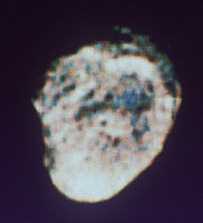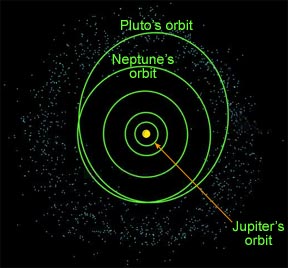Click on image for full size
NASA/JPL
Saturn's Moons and Rings
The gas giant planet Saturn has a large group of moons. It also has the largest, most complex, and best-known ring system in our Solar System.
Saturn's moon Titan is one of the few moons in the Solar System with much of an atmosphere. It is also one of the largest moons in the Solar System.
Some of Saturn's moons are odd. A giant crater on Mimas makes it look like the "Death Star" from the Star Wars movies. Iapetus is quite dark on one side and very bright on the other. Hyperion is shaped like a garbage can. Prometheus and Pandora are called the "shepherd moons" because they herd particles into Saturn's "F ring". Phoebe is very dark and moves in a strange orbit. It may be an asteroid or Kuiper Belt Object that Saturn's strong gravity captured long ago.
The other medium-sized moons of Saturn are Rhea, Dione, Tethys, Enceladus, Janus and Epimetheus.
Some of Saturn's moons are icy moons. Most of the others are small moons which are basically large rocks in space. Some stories from old myths include characters that some of Saturn's moons were named after.
The two tables below list all of Saturn's know moons. One table lists them in order of size (largest to smallest). The other table linsts them in order of their distance from Saturn (closest to furthest).
The Moons of Saturn
|
|
|||||||||||||||||||||||||||||||||||||||||||||||||||||||||||||||||||||||||||||||||||||||||||||||||||||||||||||||||||||||||||||||||||||














